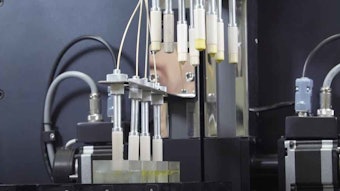Although some debate exists regarding the safety of genetically modified organisms (GMO), there is no doubt that genetic modification has allowed a number of industries to design crops and other resources with new features or added benefits. The US Food and Drug Administration (FDA) has found genetically engineered foods to be as safe as their regularly bred counterparts, maintaining only that such foods must comply with the standards of the Food, Drug and Cosmetic Act, and that if a food is significantly different from its conventional counterpart, such as in nutritional value, this information is required to be listed on the product label.1 The FDA also cites that approximately 70–75% of processed foods in US grocery stores may contain ingredients from genetically engineered plants.1
In a specific example, Cathie Martin, PhD, a research scientist at the John Innes Centre, is applying her bioengineering expertise in the creation of healthier tomatoes; she and her team have engineered them to contain high levels of anthocyanins, free radical-fighting pigments.
Why Tomatoes?
Martin’s choice to introduce anthocyanins into this commonly eaten food was simple: “We had the tools and knowledge, and [anthocyanins] have been shown to promote health in humans.” Health organizations often promote eating five vegetables or fruits a day but only 23% of consumers actually consume the recommended dose.
“Tomatoes are eaten by many people in ketchup, pizza, etc.,” explained Martin. “So we thought it was a good idea to put anthocyanins into tomatoes.” Tomatoes actually do produce anthocyanins; however, they usually are found only in the leaves, with the exception of a small number of heirloom tomatoes.
Purple Tomato Production
Martin also explained how altering the tomato’s genetics has affected its appearance. “Tomatoes are normally red due to their production of lycopene. In our experiments, the tomatoes still produce lycopene, but also contain anthocyanins, which are blue-purple pigments. This results in a purple tomato,” said Martin.
To produce the purple anthocyanin-containing tomatoes, the team utilized a genus of Gram-negative bacteria, Agrobacterium tumifaciens. “Agrobacterium undertakes the natural process of transferring its DNA to plants,” explained Martin. “It can move a piece of DNA from its genome to a plant’s genome.” The team used this technology to isolate a piece of DNA from Antirrhinum, commonly known as a snapdragon and transfer the DNA to a tomato via the agrobacterium. The anthocyanins in snapdragons are known to pigment the plant’s flowers with their dark color.
GMOs in Personal Care
GMOs often are used to assist farmers in the production of food crops or to add health and medical benefits to food items, which transfer to personal care as well. Anthocyanin-boosted tomatoes, for example, were engineered to assist the body in fighting cancer and heart disease because, according to Martin, anthocyanins trigger the body to produce antioxidants and fight free radicals. This free radical-fighting ability also provides antiaging and sun protection benefits due to the oxidative damage that is involved in sun damage.
In addition, the Personal Care Products Council reports2 that GMOs have been used to produce cosmetic ingredients. Canola, for instance, has been modified to produce high levels of lauric acid, a key ingredient in soaps and detergents, at a reduced cost to consumers. Other cosmetic ingredients potentially derived from GMOs include corn oil and flour, soybean oil, lecithin and proteins produced by yeast.
Approval and Applications
According to Martin, GMO plants must undergo a significant amount of testing for regulatory approval. To test the safety and efficacy of the purple tomatoes, Martin’s team fed the tomatoes to mice having a particular susceptibility toward cancer. The team is also in the process of recruiting human subjects for further testing. Once researchers establish the safety and efficacy of the genetically modified tomatoes, they must prove their equivalence to conventional materials on the market.
References
1. L Bren, Genetic Engineering: The Future of Foods? FDA Consumer magazine 11–12 (2003)
2. Personal Care Council Web site, available at www.cosmeticsinfo.org/HBI/2 (accessed Jan 5, 2009)










